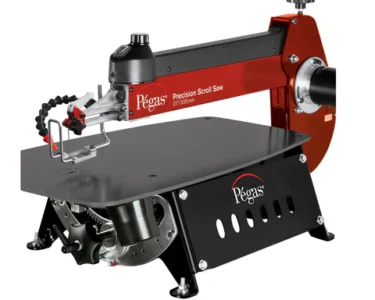Introduction
There are certain elements that make any space more inviting, and indoor ceiling fans are one of them. Aside from offering a functional way to keep air circulating and improve comfort, ceiling fans can elevate the aesthetic appeal of any room. Whether you’re furnishing a commercial space or updating the design of a residential home, the right ceiling fan can enhance the ambiance while adding a refreshing breeze to the environment. With a wide selection of indoor ceiling fans available from top manufacturers, it’s easy to find the perfect blend of style, functionality, and energy efficiency for your needs.
In this blog, we will explore the benefits, types, and design considerations of indoor ceiling fans, while also offering insights on how to choose the best option for your space. Indoor ceiling fans have become a key element in interior design, allowing individuals to enjoy a cooler, more comfortable environment while making a stylish statement. From sleek, modern designs to rustic, traditional models, the options are vast, and they can cater to any design aesthetic. So, let’s dive into everything you need to know about indoor ceiling fans and how they can enhance the beauty and comfort of your space.
The Benefits of Indoor Ceiling Fans
Improved Air Circulation and Comfort
One of the most significant advantages of installing indoor ceiling fans is improved air circulation. Ceiling fans are designed to move the air around the room, preventing it from becoming stagnant. This can be especially beneficial during warmer months when rooms tend to heat up. The gentle breeze created by a ceiling fan makes the air feel cooler, which can lead to a more comfortable living or working environment.
In addition to cooling during the summer, indoor ceiling fans can also be useful in winter. Many fans come with a reversible motor feature, allowing the blades to spin in the opposite direction. This pushes the warm air that rises to the ceiling back down into the living space, helping maintain a comfortable temperature without overworking your heating system.
Energy Efficiency
Ceiling fans are an energy-efficient alternative to air conditioning units. While they don’t reduce the room’s temperature like an air conditioner, ceiling fans create a wind-chill effect, making the space feel cooler without consuming large amounts of electricity. When combined with an AC unit, ceiling fans can help reduce the workload of your HVAC system, potentially lowering your energy bills.
Style and Design Flexibility
Another significant benefit of indoor ceiling fans is the wide range of design options available. Whether your space calls for a modern, minimalist look or a traditional, ornate fan, there is a ceiling fan to suit every style. From sleek metal finishes to natural wooden blades, indoor ceiling fans are as much about design as they are about functionality. You can even find fans that incorporate lighting elements, further enhancing the aesthetic and functionality of your space.
Added Functionality
Many ceiling fans are equipped with integrated lighting features, making them multi-functional. With a combination of light and air circulation, ceiling fans can serve as the focal point in the room, offering a solution for both illumination and cooling. Dimmable LED light kits are also available with some fans, providing flexible lighting options that can create the perfect ambiance in your space.
Types of Indoor Ceiling Fans
When choosing the right indoor ceiling fan, it’s important to consider the various types available. Each type serves a specific purpose and is designed for different room sizes and ceiling heights. Here are some of the most common types:
Standard Ceiling Fans
Standard ceiling fans are the most common type and are designed for rooms with ceilings ranging from 8 to 9 feet in height. These fans typically feature a downrod that allows the fan to hang a few inches below the ceiling, providing optimal air circulation. Standard fans come in various styles, blade finishes, and sizes, making them suitable for most rooms in a home or commercial space.
Low-Profile Ceiling Fans
Also known as flush-mount or hugger fans, low-profile ceiling fans are designed for rooms with low ceilings, usually less than 8 feet in height. These fans are mounted directly to the ceiling without a downrod, allowing them to sit closer to the ceiling. Low-profile fans are ideal for small spaces such as bedrooms, closets, and hallways where there is limited clearance.
Dual-Motor Ceiling Fans
For larger spaces or rooms with unique design elements, dual-motor ceiling fans offer a striking, functional option. These fans feature two motor heads that can be adjusted independently to create different airflow patterns. Dual-motor fans are not only highly functional but also serve as a statement piece due to their unique design.
Chandelier Ceiling Fans
Chandelier ceiling fans combine the elegance of a chandelier with the functionality of a ceiling fan. These fans are ideal for spaces where both style and comfort are essential, such as living rooms, dining areas, and entryways. Chandelier fans often feature decorative lighting elements, crystal details, and ornate designs, making them a luxurious addition to any room.
How to Choose the Right Indoor Ceiling Fan
Room Size and Ceiling Height
One of the most important factors to consider when choosing an indoor ceiling fan is the size of the room and the ceiling height. Larger rooms require fans with longer blade spans to effectively circulate the air. For small to medium-sized rooms, fans with blade spans between 42 to 52 inches are typically sufficient. Larger rooms or open-concept spaces may require fans with blade spans of 54 inches or more.
Ceiling height also plays a crucial role in fan selection. For rooms with high or vaulted ceilings, fans with a downrod extension are ideal as they allow the fan to hang lower, improving air circulation. Conversely, for rooms with lower ceilings, a flush-mount fan is recommended to ensure the fan does not hang too low.
Blade Material and Design
The material and design of the fan blades can significantly impact both the performance and appearance of the fan. Fan blades come in a variety of materials, including wood, metal, and composite. Wooden blades often provide a more traditional or rustic look, while metal blades are perfect for modern and industrial designs. Composite blades are durable and versatile, making them suitable for various interior styles.
The shape of the blades also plays a role in the fan’s efficiency and airflow. Aerodynamically designed blades can move air more effectively and operate more quietly. It’s important to choose a blade design that complements the overall decor of the room while also ensuring maximum airflow efficiency.
Fan Motor and Speed Settings
The motor of a ceiling fan is another critical consideration. A high-quality motor ensures smooth operation, quiet performance, and long-lasting durability. Look for fans with energy-efficient motors that offer multiple speed settings, allowing you to adjust the airflow according to the room’s temperature and your comfort level.
Fans with DC motors are especially energy-efficient, consuming less electricity while providing powerful airflow. DC motors also tend to run quieter than traditional AC motors, making them an excellent choice for bedrooms, offices, and other quiet spaces.
Lighting Options
If you’re looking for a fan that also serves as a light source, consider fans with integrated lighting kits. Many indoor ceiling fans come with LED light kits that provide bright, energy-efficient illumination. Some fans offer dimmable lighting, allowing you to set the perfect mood for any occasion.
There are also ceiling fans designed to work seamlessly with smart home systems, allowing you to control the fan speed and lighting through your smartphone or voice commands.
The Importance of Proper Installation
Proper installation of indoor ceiling fans is crucial for both performance and safety. It’s important to ensure the fan is securely mounted to the ceiling and that the blades are balanced to prevent wobbling. An improperly installed fan can lead to reduced airflow, noise, and even potential safety hazards.
If you’re unsure about installing a ceiling fan yourself, it’s always best to hire a professional. They can help ensure that the fan is installed correctly and operates efficiently, providing years of comfort and style.
Maintenance and Care for Indoor Ceiling Fans
To keep your ceiling fan running smoothly and efficiently, regular maintenance is essential. Here are a few tips to help you care for your fan:
- Clean the blades regularly: Dust and debris can accumulate on the fan blades, which can reduce airflow and cause the fan to wobble. Wipe the blades down with a damp cloth or use a vacuum cleaner attachment to remove dust.
- Check for loose screws: Over time, the screws that hold the fan blades and mounting brackets in place can become loose. Periodically check and tighten these screws to ensure the fan remains secure.
- Balance the blades: If your fan begins to wobble or make noise, it may be due to unbalanced blades. Blade balancing kits are available and can help restore smooth operation.
- Lubricate the motor: Some older ceiling fans may require occasional lubrication to keep the motor running smoothly. Check the manufacturer’s instructions to see if lubrication is necessary.
The Bottom Line
Indoor ceiling fans offer a perfect balance of style, comfort, and functionality for any home or commercial space. By improving air circulation, enhancing the room’s aesthetic appeal, and offering energy-efficient cooling, ceiling fans are an essential addition to any interior design. Whether you’re looking for a modern, sleek design or a more traditional, ornate fan, there are plenty of options available to match your style and needs.
When selecting an indoor ceiling fan, be sure to consider factors such as room size, ceiling height, blade material, motor type, and lighting options. Proper installation and maintenance will ensure that your ceiling fan continues to provide reliable performance and comfort for years to come.
With a vast array of decorative ceiling fans from top manufacturers, it’s never been easier to find the perfect fan to suit your space. Take the time to explore the options available and invest in a ceiling fan that not only cools the air but also enhances the overall ambiance of your environment.







